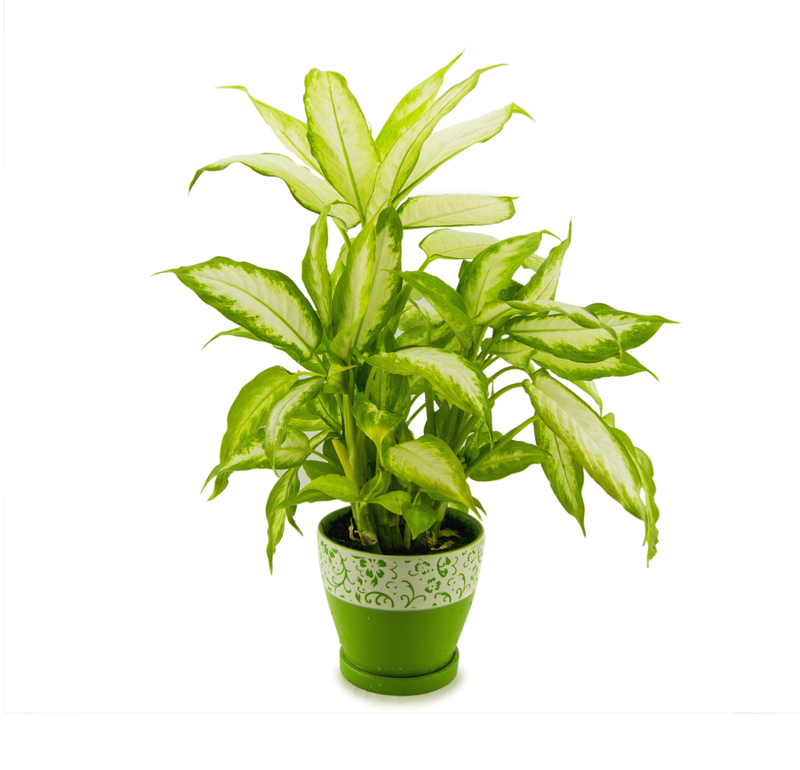Keeping Your Garden Alive: Winter Plant Care Essentials
Posted on 20/09/2025
Keeping Your Garden Alive: Winter Plant Care Essentials
As the days grow shorter and temperatures plummet, many passionate gardeners wonder how to keep their cherished plants thriving through the harsh winter months. Your garden doesn't have to look dreary just because it's cold outside. By using essential winter plant care techniques, you can ensure your backyard blooms with resilience and beauty all year round. In this comprehensive guide, we'll cover everything you need to know about keeping your garden alive in winter, including expert tips for protecting various types of plants, optimizing garden health, and gearing up for a vibrant spring revival.
Understanding Winter Challenges for Your Garden
The cold season presents unique threats to your beloved outdoor space. From frost damage and drying winds to heavy snow, your garden faces a barrage of stressors. Some of the main issues include:
- Soil freezing hindering water and nutrient uptake
- Subzero temperatures causing cellular damage in plants
- Snow and ice overloads breaking fragile branches
- Reduced sunlight affecting photosynthesis
- Dehydration from chilly winds and frozen ground
Understanding these threats is the first step in winterizing your plants and preparing your garden for the colder months ahead.

Preparing Your Garden for Winter: The Essential Checklist
Proper preparation in late autumn is critical to keeping your plants alive during winter. Here's a strategic checklist to follow:
1. Clear and Clean Your Garden Beds
- Remove dead leaves and spent annuals to discourage pests and diseases.
- Compost healthy plant residues but discard any diseased material to prevent infection in spring.
2. Mulch Generously
- Apply a thick layer of organic mulch to your flower beds and around shrubs and trees. Mulch helps insulate roots, keep soil temperatures stable, and retain crucial moisture.
- Best mulch materials include: shredded bark, straw, pine needles, or compost.
3. Cut Back the Right Plants
- Prune perennials that have finished flowering, but be cautious with plants that rely on old-growth for next season's blooms.
- Leave ornamental grasses and seed heads standing for winter interest and to support wildlife.
4. Protect Tender and Young Plants
- Wrap shrubs like boxwoods and young trees with burlap or frost cloth to shield them from wind and heavy snowfall.
- For extra-sensitive species, consider moving containers indoors or into a sheltered location.
5. Water Before the Ground Freezes
- Give your garden a deep watering before the soil hardens. Moist soil retains heat better and supports root health through the winter.
- Avoid watering if a hard freeze is imminent to prevent root damage.
Cold-Hardy vs. Tender Plants: Tailored Winter Plant Care
Not all plants need the same level of winter care. Identifying which species are cold-hardy versus frost-sensitive can help you devise a more effective winter plant care routine.
Cold-Hardy Favorites
- Winter-hardy perennials - Sedum, Hellebores, Daylilies, Hostas
- Woody shrubs and trees suitable for local climates
- Evergreen conifers and ground covers
These plants will generally survive extreme cold with minimal protection, but adding mulch can further help prevent root heaving and desiccation.
Tender & Semi-Tender Beauties
- Tropical annuals (Impatiens, Begonias)
- Bulbs not rated for your zone (Dahlias, Gladiolus, Cannas)
- Young saplings and newly planted shrubs
For these, consider.
- Lifting bulbs and storing them indoors
- Providing extra insulation with cloches or plant jackets
- Relocating containers to garages or heated porches
Winter Plant Protection Strategies for Every Garden
Mulching: Your Winter Secret Weapon
Mulching isn't just about temperature control; it also suppresses weeds and preserves valuable soil nutrients. For best results, apply:
- 2-4 inches of organic mulch around perennials and shrubs
- Keep mulch several inches away from woody stems to prevent rot
Mulch not only insulates roots but also minimizes soil temperature fluctuations and gives your garden a neat, finished look throughout winter.
Wrapping and Covering
- Use burlap screens or wraps to protect plants from drying winds and sunscald.
- Frost cloths or garden fleece offer lightweight protection for semi-tender specimens during cold snaps.
- Create temporary windbreaks for exposed locations using stakes and landscape fabric.
Cloche and Cold Frames
- Cloche domes and cold frames are excellent for shielding early spring vegetables or late-season greens from extreme temperature dips.
- DIY options using plastic bottles or glass jars work well for individual plants.
Best Practices: Watering and Feeding Your Winter Garden
Most winter plant care routines change significantly from your summer habits. Here's what you should know:
Winter Watering Guidelines
- Avoid overwatering - most plants are dormant and require less water.
- Water early on warm days when the soil isn't frozen and allow the foliage to dry before sundown.
- Focus on evergreen and newly-planted species which are more vulnerable to winter drought.
What About Winter Fertilizing?
- Do not fertilize after early fall; late feeding can force tender new growth that is vulnerable to frost damage.
- Instead, opt for compost or slow-release amendments in late autumn to offer a nutrient boost for spring root development.
Caring for Container Plants During Winter
Container gardens are particularly prone to winter stress since pots freeze more quickly than garden soil. Here's how to protect your patio favorites:
- Group containers together in a protected spot near your home's wall to maximize warmth.
- Wrap pots with burlap, bubble wrap, or hessian for insulation.
- Elevate containers off the ground to prevent waterlogging and root rot.
- If possible, move planters indoors or to a frost-free greenhouse.
Winter Lawn Care: Keeping Your Turf Healthy
Don't overlook your lawn during the cold months! Simple steps can help it bounce back lush and green in spring:
- Keep walkways cleared - avoid trampling dormant grass which can lead to compaction and bald spots.
- Rake up heavy layers of fallen leaves to prevent mold and smothering.
- Apply a late-fall fertilizer designed for winterizing to support strong root growth.
- Mow one last time at a slightly higher setting than usual to reduce winter stress.
Planting in Winter: Is It Possible?
In some regions, winter planting can successfully establish perennials, trees, and shrubs. The key is to choose dormant plants, dig before the ground freezes, and provide ample mulch. Reach out to your local garden center for advice on cold season suitability for specific species in your climate.
Pest and Disease Management in Winter
Although many pests die back in winter, some may overwinter in plant debris or bark crevices. Here's how to minimize issues:
- Remove and destroy diseased material in your garden beds.
- Clean and sterilize garden tools before storage or use in new areas.
- Inspect tree trunks and branches for overwintering insects or eggs.
Tools and Supplies for Easy Winter Garden Care
Stock up on a few essential supplies for winter garden maintenance:
- Quality mulch such as shredded bark or straw
- Burlap, frost cloths, and plant jackets for wrapping
- Watering can with a rose spout for gentle winter watering
- Garden pruners for winter clean-up
- Cloche domes or DIY cold frames
Quick Tips for Protecting Specific Plants
- Roses: Mound soil over the base and mulch heavily. Prune in early spring.
- Hydrangeas: Protect flower buds with burlap wraps or floating row cover.
- Fruit Trees: Guard trunks from rodents with mesh guards and wrap young trees.
- Herbs: Pot up favorites like rosemary or thyme and bring them onto a sunny window sill indoors.

Reviving Your Garden After Winter
When the first signs of spring appear, it's time to remove winter coverings, gently rake away mulch, and prune back perennials. Early spring is the perfect window for seeding new lawns, dividing crowded clumps, and applying fresh compost to fuel a season of healthy growth.
Your Winter Garden, Alive and Thriving
By following these winter plant care essentials, you'll keep your garden alive, happy, and ready to burst into bloom once spring arrives. From prepping garden beds in autumn to protecting delicate plants during icy spells, every action you take ensures a vibrant and fruitful growing season.
Remember: The key to a resilient winter garden is a tailored, thoughtful approach -- and your plants will thank you come spring!
Share your own winter gardening tips in the comments and help inspire others to cultivate beautiful gardens year-round!
```


